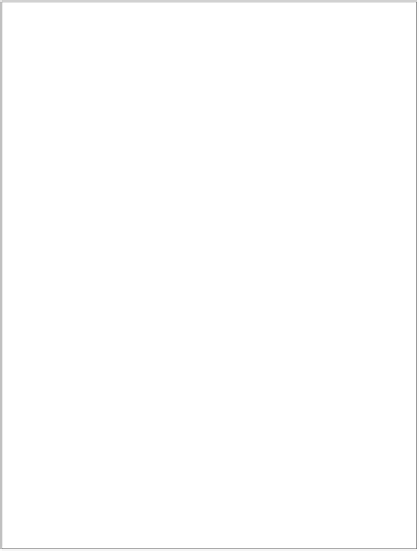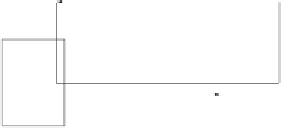Information Technology Reference
In-Depth Information
Presentation of the Analysis Process
Figure 8. Illustration of the analysis process
DCC
Document
Creation
New
stroke
Context
The formal analysis process algorithm is given
Figure 7, and it is illustrated by Figure 8. When
a new stroke, or more generally a new element, is
analyzed, the goal is to find the sequence of inter-
pretation rules to apply. As introduced in previous
section, an existing document is constituted, on
the one hand, of the already interpreted elements
it contains and, on the other hand, of its struc-
tural contexts. This knowledge defines a global
vision of the document which must be exploited
to interpret new elements. The analyzer identi-
fies the document structural contexts in which
the analyzed element is located and activates the
corresponding associated rules.
Each activated rule is tested. The analyzer
searches for possible parameters for the current
rule that is, the elements of the document that can
be associated to the analyzed element to constitute
a more complex one. For each applicable rule, the
analyzer verifies the coherence of its parameters
Document
Global vision
Local vision
DCV
SCV
Contexts
Document
Shape
Context
Verification
Context
Verification
Rule
Selection
...
...
...
SR
Elements
Parameters
Shape
Recognition
Rule
Activation
Remaining
Remaining
Rules
Rules
New
element
Element
Creation
Figure 9. Illustration of the sharp symbol analysis
process
(4)
(1)
First
iteration
Second
iteration
Third
iteration
First
iteration
(5)
(2) and (3)
Second
iteration
with the structural context in which the new ele-
ment should be located; this is modelled by the
DCV block. Only the rules that satisfy both of
these criteria remain.
The verification of the coherence of the new
element with the document structural context
thanks to a global vision means that the corre-
sponding element can exist at this positioning; the
next step consists in trying to identify the shape
of the parameters of the rule. For that purpose,
a local vision of these parameters is exploited
to analyze their structural arrangement; this is
modeled by the SCV block. A shape recognition
system can be used on the parameters of the rule
in order to identify their shape thanks to the SR
block. The recognition systems that are exploited
by our system have a particular characteristic:
they have reject options, which means they do
not give an answer unless their confidence in it
is high enough (Mouchère & Anquetil, 2006).
The advantage is to filter possible interpretations,
and to prevent from displaying an answer which
has a high probability of being wrong. The rules
that satisfy the SCV and SR blocks remain: they
are applicable.
As more than one rule can be applicable, a
Rule Selection
component is exploited to make a
decision. This component evaluates the degree to
Figure 7. Algorithm of the analysis process
AnalysisProcess
Input
Data
Data
Element
List
Rule
e /*element of the document to analyse*/
possibleRules = {}
chosenRule = null
begin
for each document structural context c that e satisfies do
/* Rule activation */
for each possible interpretation rule pr associated to c do
for each list of parameters lp (containing e) for the rule pr do
/* DCV block */
if all structural contexts of the DCV block are satisfied then
/* SCV block */
if all local constraints of the SCV block are satisfied then
/* SR block */
if the recognizer is able to interpret the parameters then
add pr to possibleRules
end if
end if
end if
end for
end for
end for
/* Rule Selection */
chosenRule = findBestSatisfiedRule(possibleRules)
if chosenRule is not null then
replace the parameters of chosenRule by the element this rule creates
/* DCC block */
create the structural contexts specified by the DCC block of chosenRule
apply AnalysisProcess to the new element
else if chosenRule is null and e is a stroke then
reject the stroke
end if
end


















Search WWH ::

Custom Search